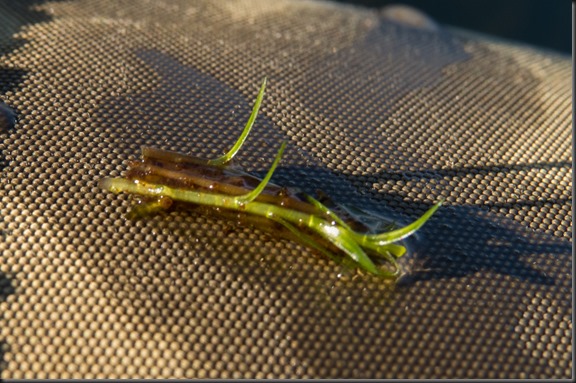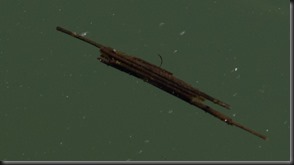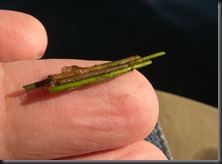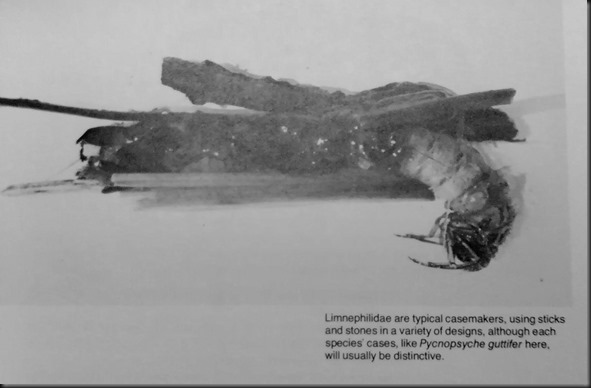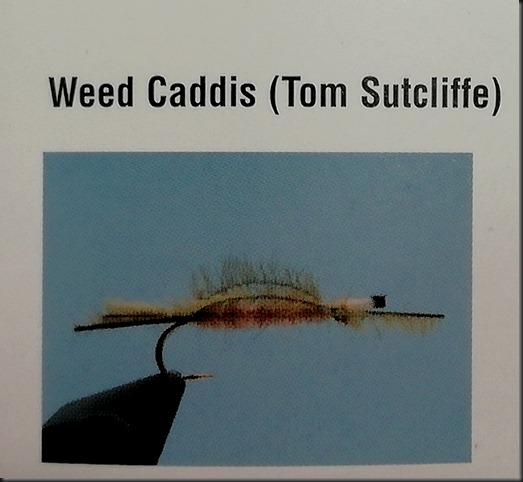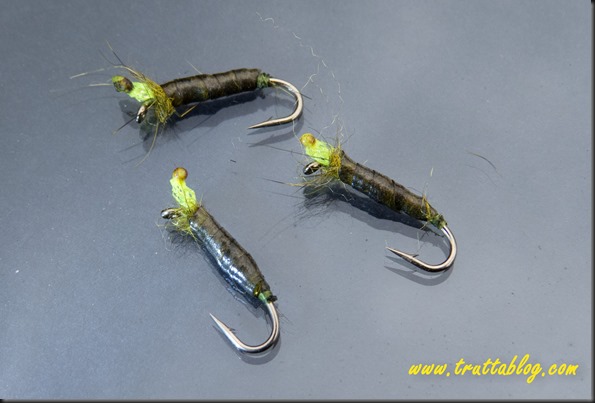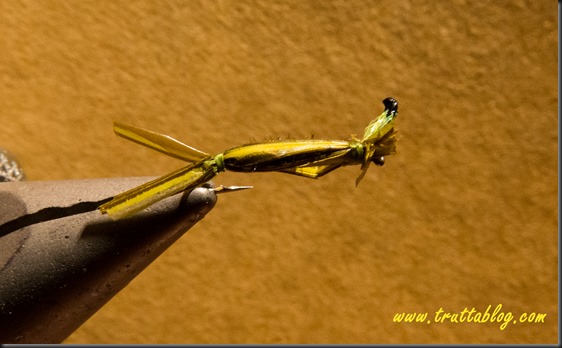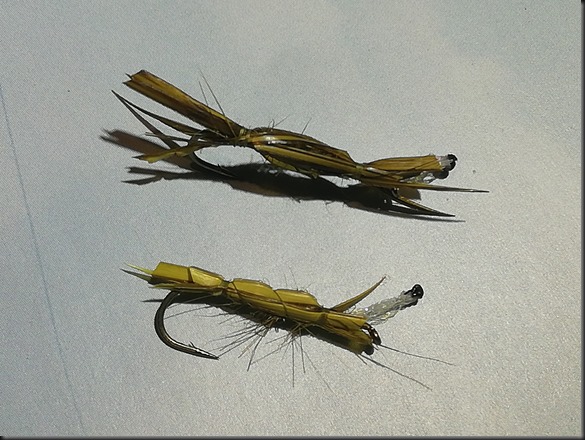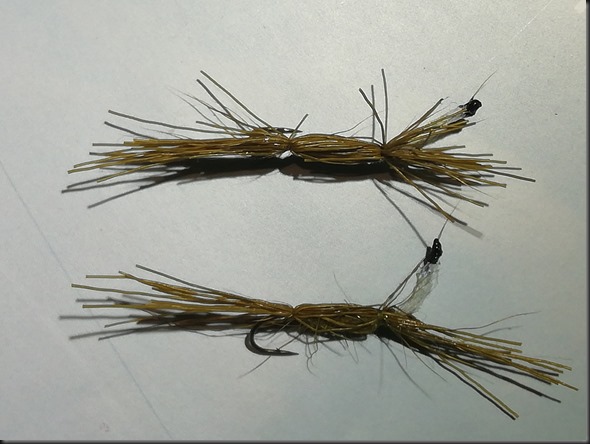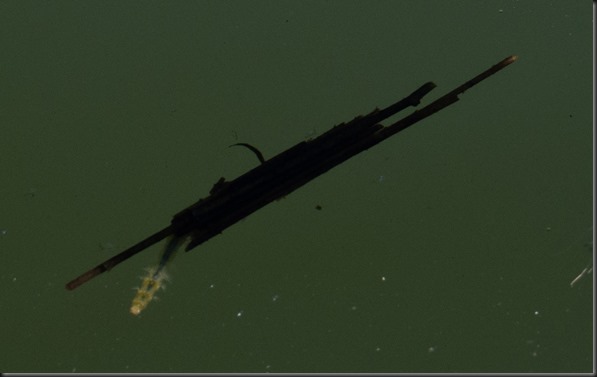I am keyed into these little house builders at the moment. I guess I am just seeing a lot of them around in our stillwaters. Almost without exception, they have built their houses of either weed fragments, or small pieces of grass stem.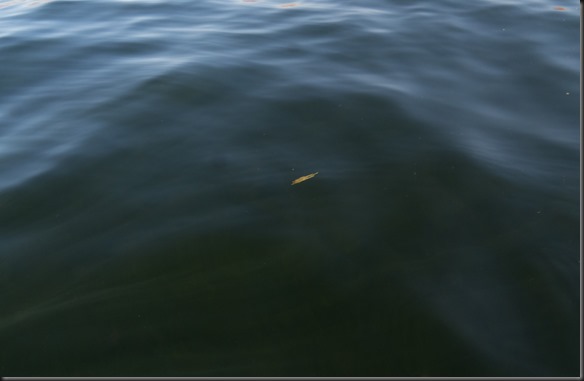
In his book “Presentation”, Gary Borger says that he “has had superb lake fishing” with caddis larva patterns, but amongst the American literature in my library there doesn’t seem to be more than a passing references to these caddis dwelling in pieces of weed fibre and grass.
In “The nymph fly tyers manual” by Randall Kaufman, one finds dressings for cased caddis that involve wound material. In “The Caddis and the Angler” (Solomon & Leiser) one finds this picture of a caddis which has used both sticks and stones, and comes close, but is not like what I would call our “weed caddis.
Turning to the South African literature, In Dean Riphagen’s first book (The South African Flyfishing handbook), he concentrates on stream dwelling cased caddis, and refers to two American patterns for these. But in his second book , Stillwater Trout, you will find what we are looking for. On page 45 is a series of six photos of weed dwelling caddis. The text of that book goes on to describe everything you need to know about cased caddis in stillwaters, how they live predominantly in weed, but how they can be found in open water etc.
In the patterns directory (page 181) you find ‘The weed caddis’, a good looking pattern attributed to Tom Sutcliffe. That pattern uses tuff chenille marked at the tip with a black marker, and the weed is represented by “Two trimmed green dyed partridge feathers”.
I like this pattern a lot, but I was keen to try to imitate the smooth surface of weed strands.
In that respect, these conventional peeping caddis, while they have the smooth body I was after, fail to imitate the long sticklike characteristics of what we typically see on the stillwaters.
In an attempt to imitate the smooth surfaced pieces of weed and grass, last season I tied up several patterns in which I used biots to get the stick/stem like feature incorporated into the pattern. Goose biots proved a bit short, but Turkey biots on a #10 pattern provided ample length.
You will see that I used a chartreuse yarn. While I caught quite a few fish on these, I realised from my observation, that most of the caddis were in fact closer to white in colour.
So I have now tied up these:
The other aspect that occurs to me is that these things often drift close to the surface. Mine tend to sink a bit too fast. I have tried fishing them under a dry ( a DDD) , in order to keep them up high, but it occurred to me to take the deer hair of the dry fly, which in its un-trimmed state is also strand-like in character, and incorporate it into the pattern.
Nice and messy aren’t they!
I look forward to throwing these out into the shallows. It is generally out in the shallows where one finds them, but as Dean Riphagen points out, they can be found in open water too.
In his book “Caddisflies”, Gary Lafontaine writes about Catastrophic drift, in which he describes events that dislodge caddis and set them adrift in open water. On a recent trip to a large stillwater, it was clearly evident that the previous day’s berg wind was just such a catasrophic event, because there were helpless weed caddis drifting about all over the place.
As for the size fly to use: These were a full two and a half inches in length (6cms). According to LaFontaine this is “possibly to keep other insects or small fish from swallowing the case whole”. It is clearly a lot longer than the worm that lives inside it, which gives some weight (or is it length?) to that theory. I am using a #10 long shanked hook for most of my i
mitations.
In speaking of the fact that Mystacides caddis seem to add long sticks to their houses, LaFontain suggests that you can “put a long stripped hackle quill lengthwise in his imitation to match this feature” That is something I plan to add to the biots in future.
Now to turn to the action that you are trying to imitate. Here is the tricky part. These things are often hanging dead still, but the “worm” is doing this:
[youtube https://www.youtube.com/watch?v=K_O7ZLarExE]
Good luck imitating that!
